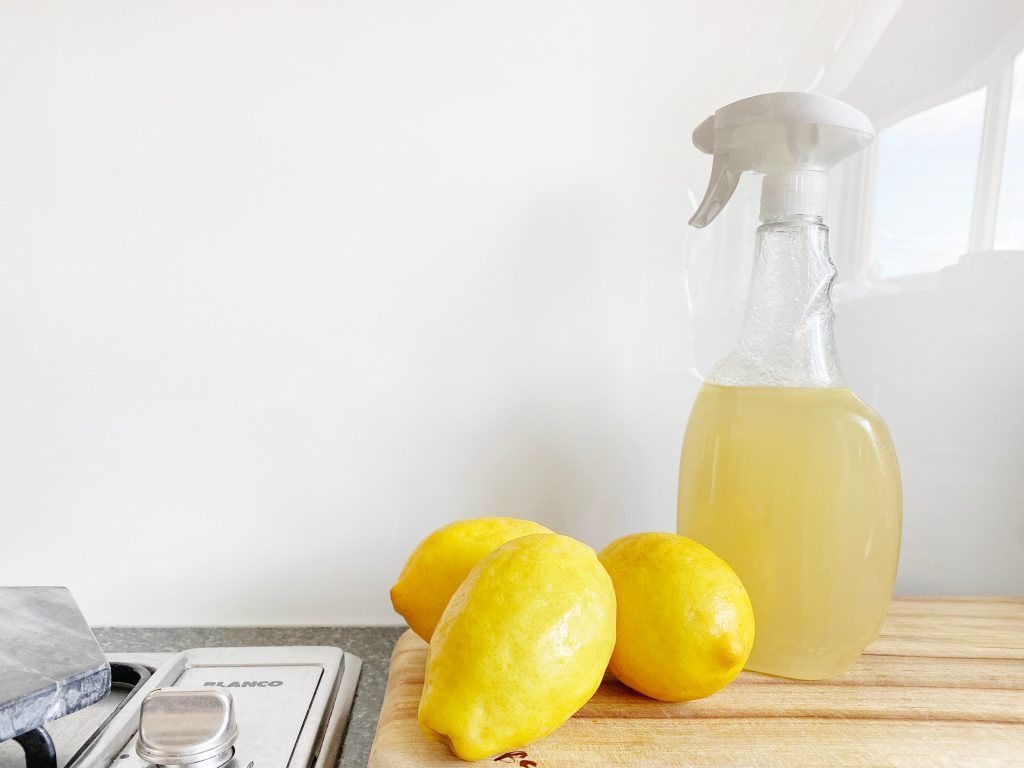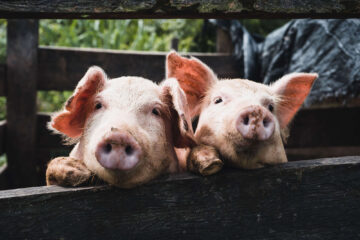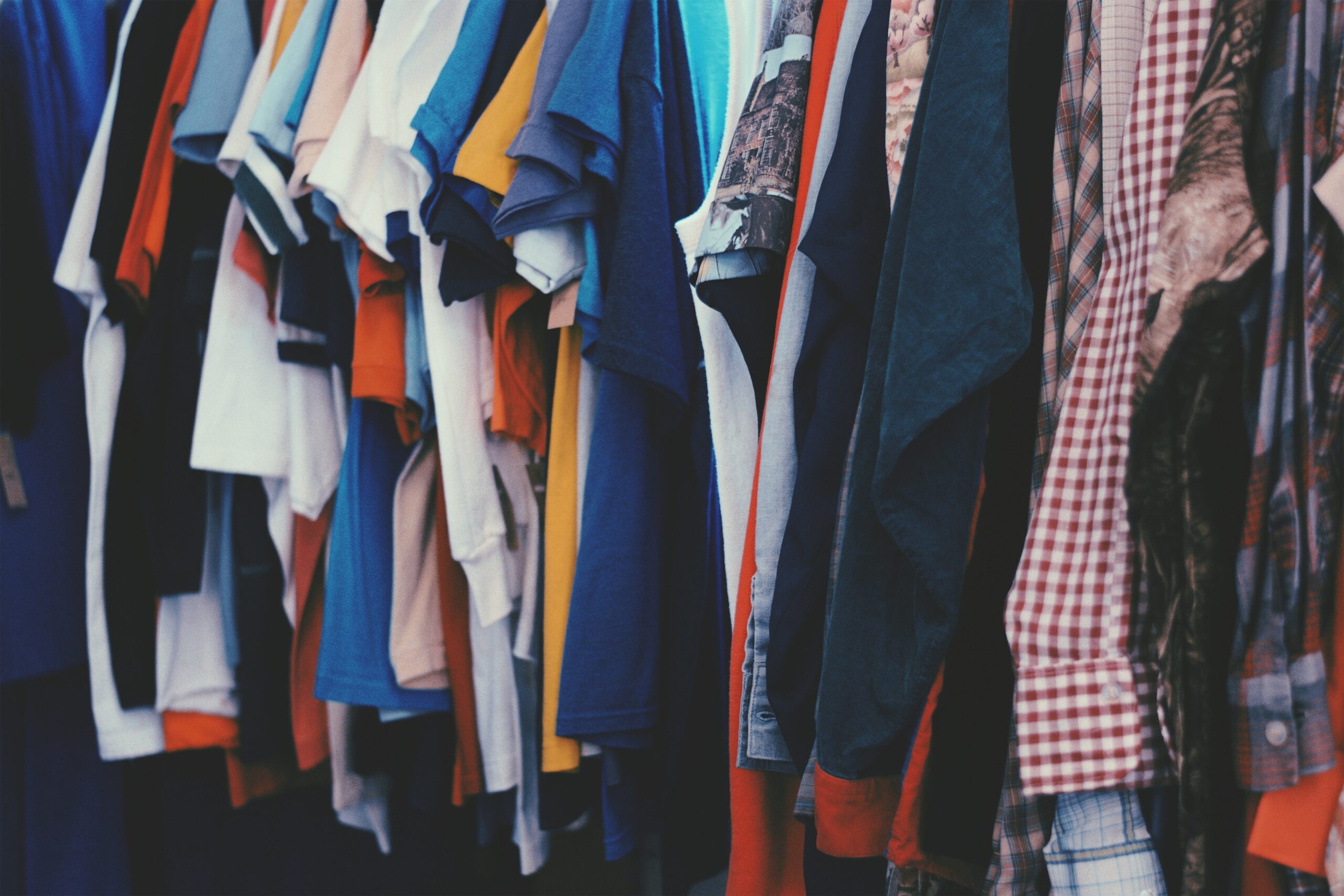How ‘clean’ are our cleaning products

Mining, livestock, and transport are the top 3 most polluting industries in the world today. However, there are other businesses who further contribute to the devastating effects of global warming, including the production and use of certain household cleaning products.
Advertisements for the miraculous anti-grease household cleaning products have been overtaking the media for many years. It is not uncommon for companies to claim that their “clean-all” products can make our lives easier. Customers, already overwhelmed with busy life schedules, are led to believe that with only a small amount of product, as claimed in ads, their homes will become spotless. What companies do not tell their customers, is that in addition to cleaning our homes with ease, they also pollute our air, our seas, the flora, and the fauna. These chemically produced household cleaning products will also harm aspects of our own, and our families’, health!
But how is it possible that these seemingly harmless products, whose sole function is none other than cleaning and disinfecting our homes, could have such negative impacts?
Leo Clean wants to share with you the devastating truth of common household cleaning products. These are some of the main reasons why our team has selected to only use eco-friendly and sustainable products to clean your homes.
Plastics
Among environmentalists there is nothing more taboo than the world (and the use of) “Plastic”. It is no secret that due to their composition, most plastic products accumulate in vast numbers in our ocean and tend to degrade at much slower rates than compostable products. In fact, plastics can take between 500-1000 years to degrade! According to science-based estimates, there are no less than 5.25 trillion plastic particles – weightint a total of 250,000 tons – that are currently floating in the world’s oceans. This number includes microplastic particles (particles less than 5 mm).
Sadly, marine wildlife often confuses these polluting particles with phytoplankton. Furthermore, microplastic is often mistaken for food by marine species. This has resulted in the death of around 100,000 marine mammals and a million seabirds annually.
In order to assist global efforts to reduce the pollution of oceans by plastics, many consumers have started to recycle their single-use plastic and to choose to buy products with the famous 3 arrows icon. After all, we are led to believe that by recycling the plastic containers we throw out will be repurposed and reused.
Not quite…
Catherine McKenna, federal environment minister of Canada, recently said that “[we] do not do a good job on recycling.” Wait a second – WHAT? According to the minister only 9% of plastics in all of Canada are recycled. Sadly, the rest of the products goes to landfill (86%), in the incinerator (4%), or in the oceans (1% – amounting to 29,000 metric tonnes). You can read the full article here.
Chemicals
Even though some cleaning products may appear to be harmless, they can, in fact, be quite damaging. One might imagine that the home is a metropolitan city and the cleaning products are the confined industrial area where toxic chemicals are continuously generated. Despite the separation, the production of toxic gases in these cites still leaks out and pollutes the “safe” city spaces and the ozone layer.
Scientists from the National Oceanic and Atmospheric Administration of the USA (NOAA) carried out a study evaluating the sources of contamination in the city of Los Angeles. Historically, smoke released from car exhaust vents has been the number one reason for smog covering the city. However, to their surprise, contamination from evaporated volatile organic compounds (VOC) from common household cleaning products was almost at the same level as that of transportation.
Think of it like this. Every time you clean your home, you use different products for your floor, your furniture, or your windows. Each of these cleaners have hundreds of chemicals in them. Some, such as chlorine, not only leave behind a strong, unpleasant smell, but can also cause damage to your skin. Others, on the other hand, have flavorings that make the perfume last for hours (the one that many now associate with “freshly cleaned space”), masking the harmful effects.
It might come as a surprise to some that the cleaning of your home can further damage the atmosphere by keeping the windows open during the process – much like a car exhaust.
Animal testing
Each year, millions of animals are subjected to innumerable tests to help scientists determine the safety of our cosmetic, personal hygiene, and cleaning products. During these tests, animals are still alive and suffer intolerable pain and suffering. Among other brutal acts, animals are subjected to the shaving foams, shampoos and toothpaste are pressed into their stomachs, and they are forced to inhale hairspray; volatile substances are sprayed on their skin and eyes (‘Draize’ test). What goes behind closed doors, not shown to the common consumer, is inhumane. Sometimes these experiments are hidden behind well-accepted phrases such as: “clinically tested” or “tested under dermatological control”.
The best way to stop animal testing companies is to not buy their products and to let them know that we do not agree with these practices by writing a message or comment on social media. Afterall, the consumer has the purchasing power and votes with his/her hard-earned money.
Fortunately, as more people are becoming aware of these cruel practices, we begin to see an increasing number of companies that are changing how their products are tested. Currently, there are already 37 countries that have banned animal testing, including all the members of the European Union, Norway, Switzerland, New Zealand, Israel, India, Taiwan, and Guatemala. Countries like the United States, Canada, Australia, Chile, are treating similar laws.
Alternatives
As consumers, what can we do to aim for the least possible damage to our Planet and its inhabitants?
The answer can be as easy as going into your search engine (such as Google), typing in the desired product, and adding terms such as “vegan”, “chemical-free”, “cruelty-free”, and others. Some companies – such as Tru Earth – We can even have the products delivered to our homes.
For those who are more interested in DIY projects, there are plenty of opportunities to make homemade products. Some staple bases for homemade cleaning products are white vinegar and rubbing alcohol. One can also add Borax to attack those places that require a good scrub.
Information about how common behaviours (such as cleaning) are impacting our planet are widely available online. Education ourselves can be one of the most important steps towards keeping both our homes and our planet clean.


